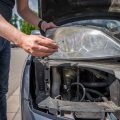1. Introduction: Electric Cars Charging Ahead in India
Over the past few years, electric vehicles (EVs) have steadily moved from being a niche curiosity to a genuine movement on Indian roads. With increasing concerns about air pollution in cities like Delhi, Mumbai, and Bengaluru, as well as the government’s push for cleaner mobility solutions, EVs are quickly becoming the talk of the town among both urban commuters and long-distance travelers. From affordable hatchbacks to premium SUVs, Indian consumers are now seeing more choices than ever before. However, while the buzz around electric cars is unmistakable, there remains an important question: how do these vehicles actually perform given India’s diverse and sometimes extreme weather conditions? From sweltering summers in Rajasthan to heavy monsoons in Kerala and chilly winters in the North, the Indian climate presents unique challenges that can impact battery life, driving range, and overall reliability. Understanding how EVs cope with these weather-related factors is crucial for anyone considering making the switch to electric mobility in India.
2. The Indian Climate: Heat, Humidity, and Monsoon Challenges
When it comes to electric car performance in India, understanding the nations diverse climate is fundamental. From the scorching summers of Rajasthan and Delhi to the humid coastal air in Mumbai and Chennai, and the relentless monsoon downpours throughout Kerala and Assam, Indian weather conditions present unique challenges for EV owners. Each region’s climate directly impacts an electric vehicles range, battery health, and overall comfort during long drives.
Extreme Heat in the North
Northern states like Uttar Pradesh, Haryana, and Punjab experience peak summer temperatures soaring above 45°C. For EV drivers in these regions, high ambient temperatures can reduce battery efficiency and put additional strain on air conditioning systems. In such heat, battery management systems work overtime to prevent overheating, sometimes resulting in decreased driving range during mid-day commutes or road trips along NH44.
Humidity Along the Coasts
Coastal cities such as Kolkata, Visakhapatnam, and Kochi are known for their year-round humidity. High moisture levels can impact an electric car’s electrical components if not properly sealed. Additionally, constant use of cabin cooling systems drains the battery faster—a real concern when driving between major hubs like Chennai and Puducherry during sultry afternoons.
Monsoon Downpours
The monsoon is a defining feature of Indian weather from June to September. Heavy rainfall leads to waterlogging on city roads in places like Mumbai or Bengaluru. Drivers often worry about water ingress affecting sensitive EV electronics or traction loss on slippery surfaces. However, modern electric cars designed for Indian conditions are equipped with better waterproofing and traction control systems.
Weather Impact Table
| Region | Main Weather Challenge | Impact on EV Performance |
|---|---|---|
| North India (Delhi, Rajasthan) | Extreme Heat | Reduced range; Battery thermal stress |
| Coastal Cities (Mumbai, Chennai) | High Humidity | Faster battery drain; Moisture risk |
| Monsoon Regions (Kerala, Assam) | Heavy Rainfall | Poor traction; Waterlogging concerns |
A Daily Driving Perspective
Navigating these weather extremes requires adaptation—planning charging stops more frequently during summer road trips or double-checking your EV’s wading depth before a monsoon drive through city streets. For many Indians making the transition from petrol or diesel cars to electric vehicles, appreciating how regional climates influence everyday performance is key to a smooth driving experience across our diverse country.

3. Battery Performance: From Delhi’s Summers to Kerala’s Rains
When it comes to electric cars in India, the country’s diverse weather plays a major role in how batteries perform on the road. Let’s look at what this means for EV owners from the scorching summers of Delhi to the relentless monsoon rains of Kerala.
High Temperatures and Their Impact
During peak summer months, especially in North India where temperatures can easily cross 45°C, electric car batteries face significant challenges. Extreme heat accelerates battery degradation, reduces charging efficiency, and sometimes leads to thermal management issues. Many Indian EV drivers have noticed that their range drops noticeably on long highway stretches under the blazing sun. Manufacturers are working on improving battery cooling systems, but for now, it’s wise to avoid fast-charging during peak afternoon hours and park your car in shaded areas whenever possible.
Monsoon Rains and Humidity Challenges
Come June, the monsoon sweeps across states like Kerala, Maharashtra, and West Bengal, bringing heavy rainfall and high humidity. While modern electric cars come with well-sealed battery packs and IP-rated protection, excessive moisture can still affect connectors or charging ports if not properly maintained. Humidity also indirectly affects battery performance by slowing down charging speeds and slightly reducing overall range due to increased power demands from air conditioning and defogging systems.
The Range Reality on Indian Roads
Indian highways and city roads present unique conditions—traffic jams in Mumbai rains or highway heat waves in Rajasthan—that force batteries to work harder. In real-world scenarios, EV owners often report a 10-20% reduction in claimed range during extreme weather, compared to test lab conditions. Planning trips with a buffer in mind becomes essential, especially when travelling long distances between cities where charging infrastructure is still developing.
What Indian EV Owners Should Keep in Mind
To get the best out of your electric car’s battery amidst India’s dynamic weather, regular maintenance is key—keep charging ports clean and dry, monitor battery health via manufacturer apps, and adapt your driving style as needed. Ultimately, being mindful of these weather impacts ensures smoother rides whether you’re battling Delhi’s heat or Kerala’s downpours.
4. Long Drives & Highway Cruising: Real-World Experiences
When it comes to long drives and highway cruising, Indian EV owners have plenty of stories that reflect the unique challenges and delights of electric motoring across the country’s diverse landscapes. From the bustling highways connecting Mumbai to Pune, to the scenic yet unpredictable roads in Kerala or the wide stretches between Delhi and Jaipur, electric cars are increasingly being tested for their endurance, efficiency, and comfort under Indian weather conditions.
Many enthusiasts report that driving an EV on highways during peak summer can be a mixed bag. While the instant torque and silent operation offer a refreshing change from traditional petrol or diesel cars, range anxiety remains a common concern—especially when air conditioning is running full blast in 40+ degree Celsius heat. However, several owners have highlighted how regenerative braking in stop-and-go city traffic actually helps in topping up the battery, especially in cities like Bengaluru and Hyderabad where traffic jams are frequent.
Owner Experiences Across States
| Route | Weather Condition | EV Model | User Feedback |
|---|---|---|---|
| Mumbai-Pune Expressway | Hot & Humid (35°C+) | Tata Nexon EV | Minimal range drop if AC is set at eco mode; charging stations reliable but spaced far apart. |
| Bangalore-Mysore Highway | Moderate (28°C) | MG ZS EV | Smooth ride with consistent range; slight loss during uphill sections. |
| Delhi-Jaipur Highway | Dry & Hot (40°C) | Kia EV6 | Excellent cooling even in peak summer; rapid charging at major pit stops crucial. |
| Cochin-Kumarakom Rural Tracks | Tropical Rainy (30°C) | Tata Tigor EV | No issues with traction on wet roads; slower charging due to rural setup. |
Challenges Faced During Long Journeys
- Charging Infrastructure: Owners mention that while major cities and highways now have better coverage, finding fast chargers in remote areas or smaller towns is still tricky. Planning ahead with apps like PlugShare or Tata Power EZ Charge is almost mandatory.
- Climate Impact: In states like Rajasthan or Tamil Nadu where temperatures soar, using AC reduces effective range by 10–20%. Conversely, hilly regions like Himachal Pradesh see increased energy consumption during climbs but benefit from regeneration on descents.
- Cultural Adaptation: Indian families often travel with heavy loads and multiple passengers, which can further impact range. Some owners recommend keeping luggage light for longer trips.
The Verdict from Enthusiasts
The consensus among early adopters is clear—electric vehicles can handle Indian highways and long distances if one plans routes carefully and adapts to local weather conditions. With growing infrastructure and improved vehicle technology, more Indians are confidently taking their EVs on adventures from Kashmir to Kanyakumari, enjoying a blend of modern mobility with Indian road trip traditions.
5. Charging Infrastructure: From Metro Cities to Small Towns
When it comes to electric car performance in Indian weather conditions, charging infrastructure plays a pivotal role, especially for those who dream of long highway drives or road trips across diverse regions. In the bustling metros like Delhi, Mumbai, and Bengaluru, the availability of EV charging stations is steadily improving. Fast chargers are popping up at malls, office complexes, and even along expressways. However, as any passionate driver will tell you, real India lies beyond the glass towers of Tier 1 cities. In smaller towns and rural areas, the situation is still evolving—charging points are fewer and reliability can be an issue, particularly during monsoon season or extreme heat.
The challenge intensifies outside metro zones where power cuts are frequent and grid stability fluctuates. Some users from these regions share stories of planning their trips meticulously—checking apps for active stations and sometimes calling ahead to confirm functionality. Unpredictable weather adds another layer: heavy rains may disrupt local electricity supply, while summer heat can impact charger efficiency or slow down fast-charging rates. It’s not uncommon for EV owners in such places to rely on slower home chargers or innovative community solutions, like shared points set up by local businesses.
That said, there is a positive shift underway. Central and state governments have announced ambitious plans to expand the EV charging network into Tier 2 and Tier 3 cities. Companies like Tata Power and Ather are investing heavily in setting up stations at strategic locations along national highways and in smaller urban hubs. The aim is to make intercity travel feasible without range anxiety—even when travelling from Lucknow to Kanpur or Nagpur to Nashik.
Still, ground reality means early adopters must adapt their driving routines around infrastructure limitations. Whether it’s carrying an extension cable just in case or building rapport with local shopkeepers willing to offer a plug point during emergencies, Indian EV owners are resourceful. As charging tech advances and more all-weather stations come online, expect longer trips—across humid coasts or dry interiors—to become smoother journeys filled with the kind of unexpected discoveries that make Indian road travel so memorable.
6. Maintenance & Longevity: Coping with Indian Dust and Roads
Electric vehicles (EVs) promise low maintenance, but India’s unique road and weather conditions introduce challenges that require specific care. The nation’s infamous dust—whether from bustling city traffic or rural tracks—can quickly clog air filters, cooling systems, and electrical contacts. Regular cleaning of the battery cooling system and air intake is crucial to prevent overheating, especially during scorching summers or when traversing rough highways between cities like Delhi and Jaipur. It’s advisable for EV owners to schedule more frequent check-ups than international recommendations suggest, as India’s bumpy roads can accelerate wear on suspension components and underbody protection.
Humidity and monsoons add another layer of complexity. Water ingress can impact sensitive electronics and connectors, so inspecting seals and ensuring waterproofing is intact after every rainy season is a must. Urban EV drivers in Mumbai or Chennai must be vigilant about puddle splashes during the rains—battery enclosures are sealed, but regular inspections for corrosion or loose wiring help preserve performance over time.
The longevity of an EV in Indian conditions also hinges on disciplined charging practices. Frequent fast charging during extreme heat can stress batteries; instead, slow overnight charging under moderate temperatures is gentler for long-term health. Many experienced EV users in India recommend keeping the battery level between 20% and 80% rather than full cycles, particularly when enduring the seasonal temperature swings from Rajasthan’s dry heat to Himachal Pradesh’s winter chill.
In short, adapting your EV maintenance routine to India’s real-world conditions—think extra dusting, careful post-monsoon checks, and mindful charging habits—goes a long way in extending both performance and lifespan. With these practices, you’ll keep your electric ride ready for both daily commutes and those ambitious long drives across diverse Indian landscapes.
7. Looking Ahead: Government Policies and Drivers’ Adaptation
As India accelerates towards a greener future, the role of government policies and the adaptability of EV drivers become increasingly significant in shaping electric car performance under Indian weather conditions. The FAME (Faster Adoption and Manufacturing of Electric Vehicles) scheme, with its multiple phases, has already provided a much-needed boost by offering subsidies and incentives to both manufacturers and buyers. State-level policies further sweeten the deal, with road tax exemptions, registration fee waivers, and free charging infrastructure initiatives cropping up across major cities like Delhi, Bangalore, and Hyderabad.
Yet, these policy frameworks are only as effective as their reach and implementation. The Indian EV community—ranging from first-time users in metros to early adopters in Tier-II towns—is rapidly evolving. On-ground stories reveal that drivers are becoming more mindful about battery management during extreme summers and monsoons. WhatsApp groups, regional forums, and digital platforms have mushroomed, where experienced owners share real-time advice on efficient AC usage or how to find reliable charging stations during heavy rains. Such grassroots knowledge exchange is becoming vital in navigating the unique weather challenges faced by Indian EV owners.
At the same time, policy-makers are responding to feedback from this growing community. There’s increasing focus on supporting robust battery research for higher heat tolerance and faster charging networks that can withstand local climate stressors. With more indigenous startups entering the fray—tailoring solutions specifically for Indian roads and weather—the synergy between government vision, industry innovation, and driver adaptation is stronger than ever.
Looking ahead, the journey for electric mobility in India will depend not just on incentives or technology upgrades but also on building a resilient ecosystem where EV drivers become partners in progress. As more Indians choose electric cars for daily commutes or long-distance drives through diverse climates—from humid coasts to arid interiors—the collective learning curve will continue to shape both personal experiences and policy direction.


